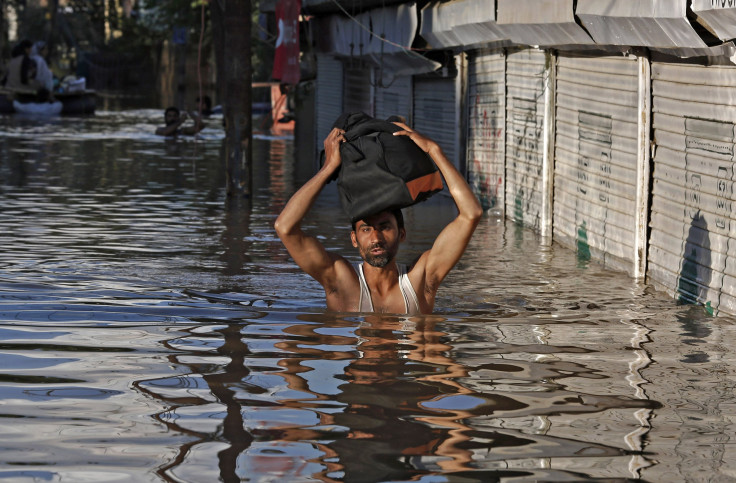Natural Disasters Have Been Displacing One Person Every Second Since 2008, Finds New Report

Over the last seven years, natural disasters have displaced one person every second. And, in 2014 alone, over 19 million people were forced to flee their homes because of floods, storms and earthquakes, according to a new report by the Norwegian Refugee Council (NRC).
“Latest historical models suggest that even after adjusting for population growth, the likelihood of being displaced by a disaster today is 60 percent higher than it was four decades ago,” the report said, adding that while every nation was vulnerable to natural disasters, people in low- and middle-income countries are the most affected. “Two key drivers of exposure and vulnerability are urban population growth in developing countries, and economic growth.”
As a result, almost 90 percent of the 19.3 million people displaced last year lived in Asia -- which accounts for 60 percent of the world’s population. China, India and the Philippines experienced the highest levels of displacement in absolute terms, both in 2014 and for the seven-year period between 2008 and 2014.

“Most of the largest displacements in 2014 were associated with weather-related hazards. The three largest were caused by typhoons and floods in the Philippines and India,” the report found. “Eight of the 20 largest disasters of the year were triggered by typhoons or tropical storms in Asia.”
In the Philippines, for instance, last July’s powerful typhoon Rammasun -- the first to directly impact the Philippines in 2014 -- displaced a staggering 2.99 million people. Similarly, in India, over 1 million people were displaced by floods that struck the eastern state of Odisha in August.
Floods and storms alone displaced 17.5 million people in 2014, while the remaining 1.7 million people were displaced by geophysical hazards such as earthquakes.
“The millions of lives devastated by disasters is more often a consequence of bad man-made structures and policies, than the forces of mother nature,” Jan Egeland, Secretary General of NRC, said, in a statement accompanying the report. “A flood is not in itself a disaster, the catastrophic consequences happen when people are neither prepared nor protected when it hits.”
While the number of displaced people was lower in 2014 than in the previous two years, and was also significantly less than the seven year average of 26.4 million, the historical trend in displacement is relentlessly rising, the report found.

And, this number is unlikely to decrease -- or even plateau -- in the coming years.
“Climate change, in tandem with people’s increasing exposure and vulnerability, is expected to magnify this trend, as extreme weather events become more frequent and intense in the coming decades,” the report warned.
Already, extreme heatwaves and heavier rainfall are starting to become the “new normal.” According to a recent study -- published in the journal Nature Climate Change -- heat extremes that used to occur once every 1,000 days are now happening four to five times more often. Moreover, even if the rise in global temperatures is limited to within the internationally agreed 2 degrees Celsius (3.6 degrees Fahrenheit), weather is likely to become more volatile in the coming years.
“It is the most rare and extreme events for which the largest fraction is anthropogenic, and that contribution increases nonlinearly with further warming,” the study found.
© Copyright IBTimes 2024. All rights reserved.












